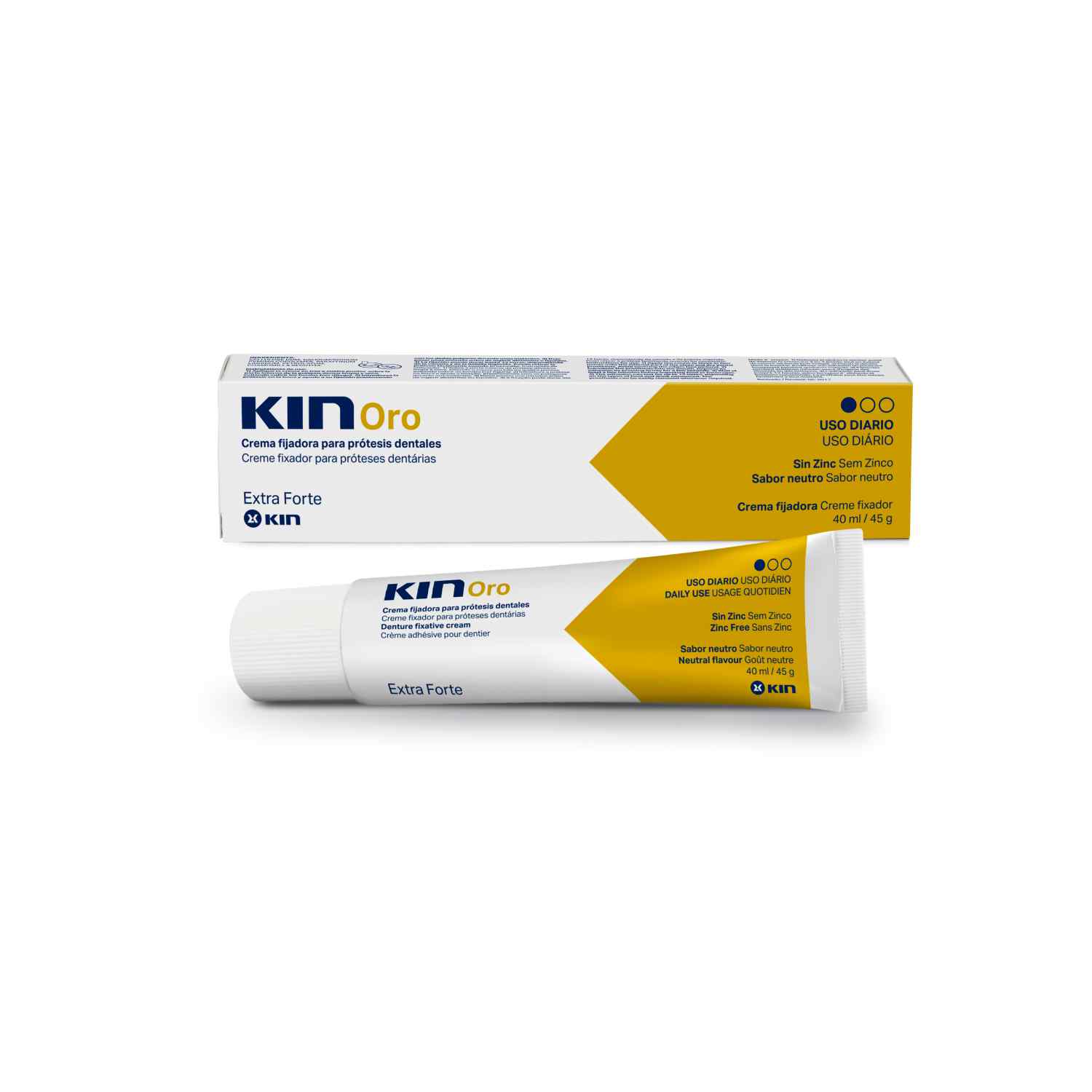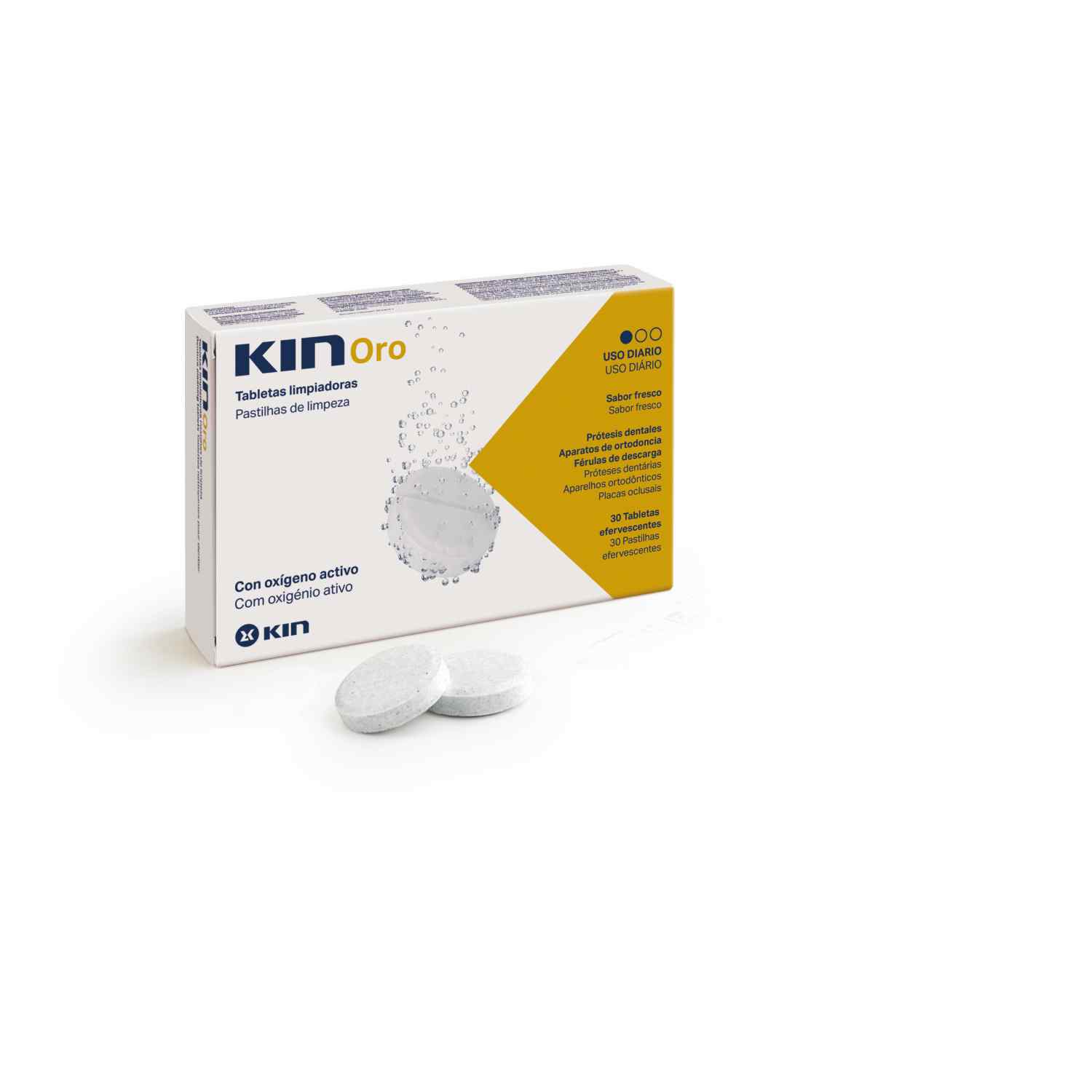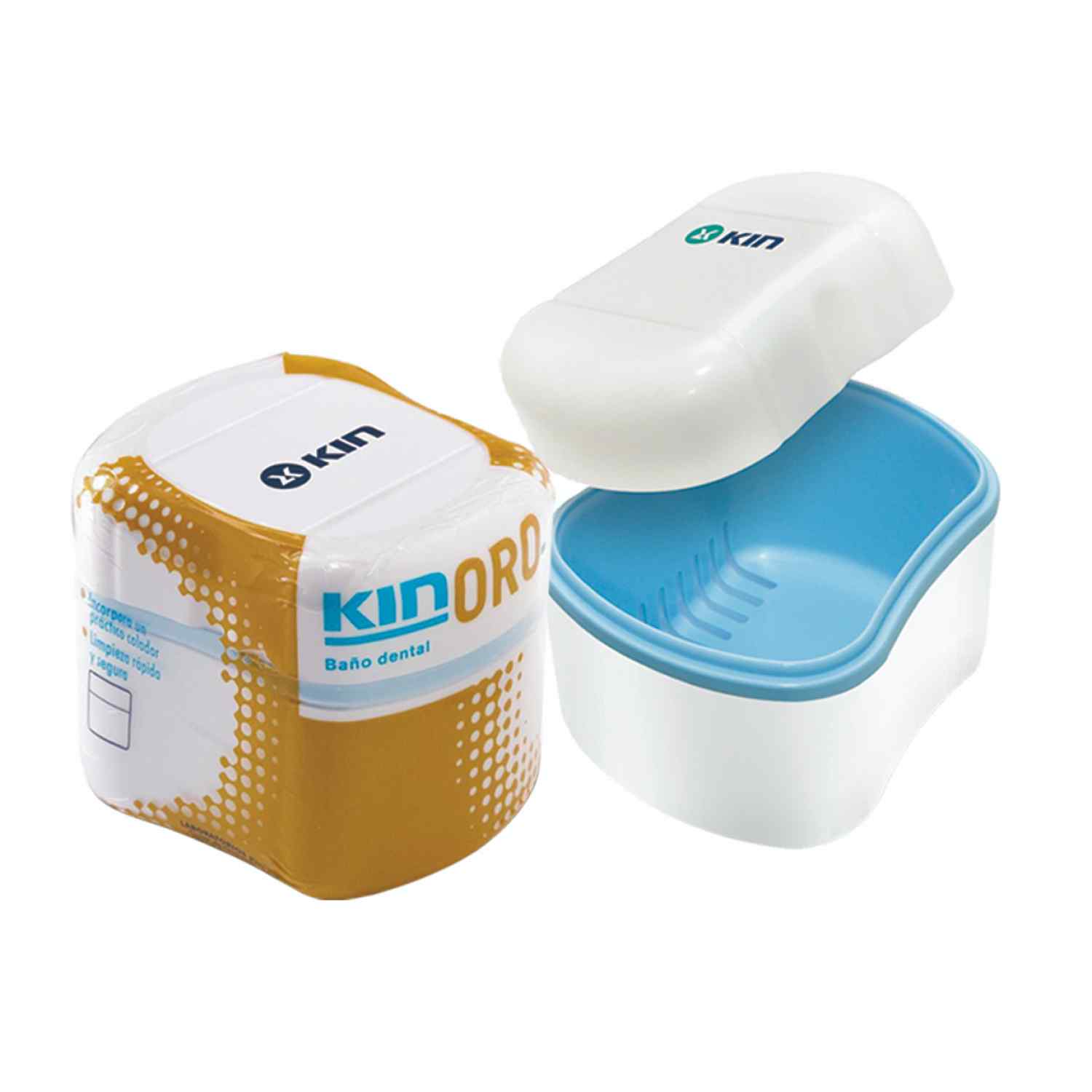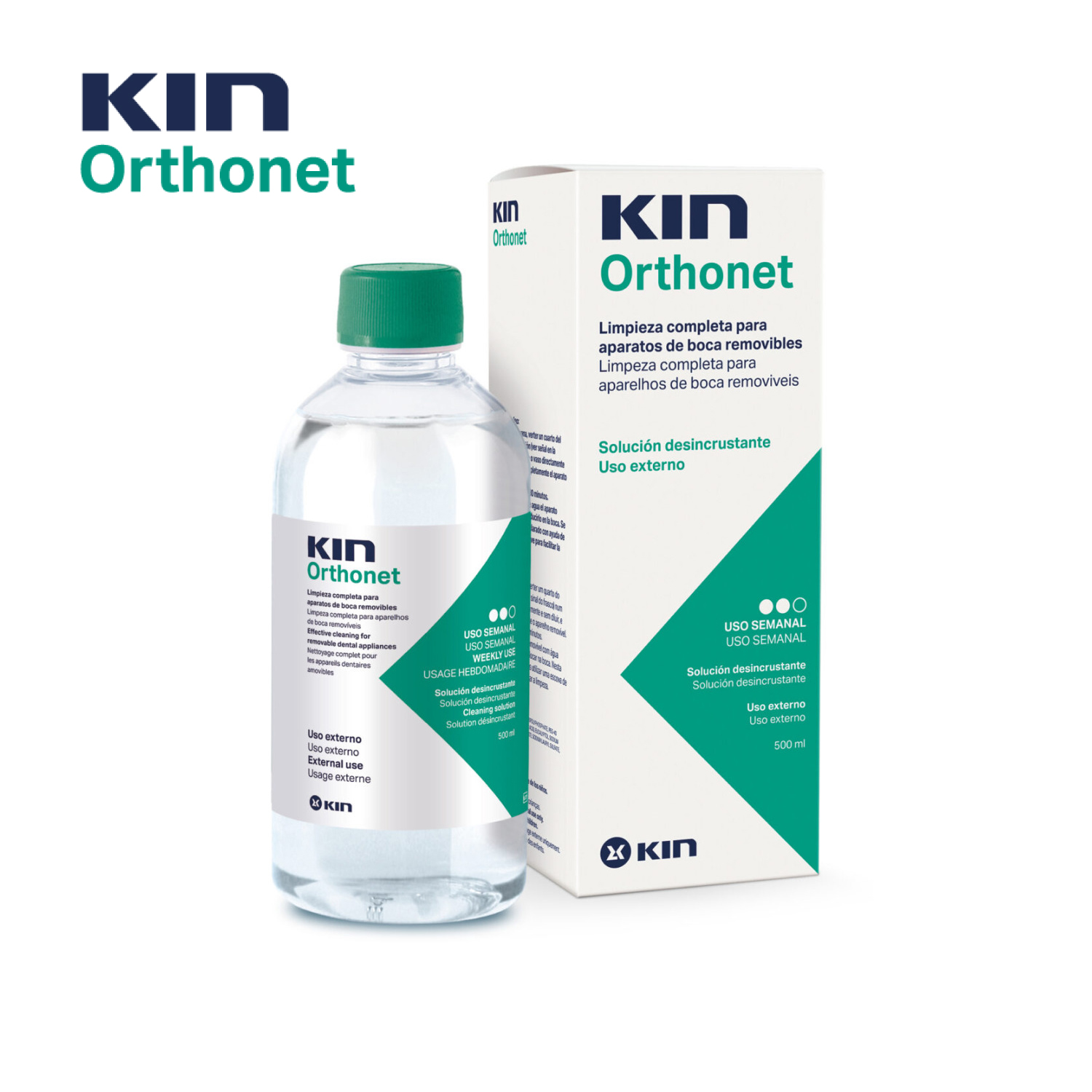When teeth are lost, there are now increasingly effective dental treatments that can replace them to ensure full functionality of the dentition. We analyse all the details about dental prostheses and implants in this complete guide.
KIN CONTENT GUIDES
Guide to dental prostheses and implants
Table of Contents
- 1. Dental prosthesis
- 2. Types of dental prosthesis
- 3. Prosthetic materials
- 4.
- 5. Cleaning the denture
- 6. Dental Implants
- 7. What is a dental implant?
- 8. Dental Implantation Surgery
- 9. Types of Dental Implants
- 10. Dental Implant Materials
- 11. How long does a dental implant last?
- 12. Dental Implant Cleaning

1. Dental prostheses
A dental prosthesis is an artificial element that is placed inside the oral cavity to replace one or more teeth. Thanks to these prostheses, the aesthetics and functionality of the teeth can be fully restored after the loss of the original tooth.
The dentist, together with the expert in prosthodontics, known as a dental technician, is in charge of studying the mouth and analysing the needs of each patient, as well as the personalised creation of the prosthesis and its subsequent fitting, working as a team to achieve the best result.
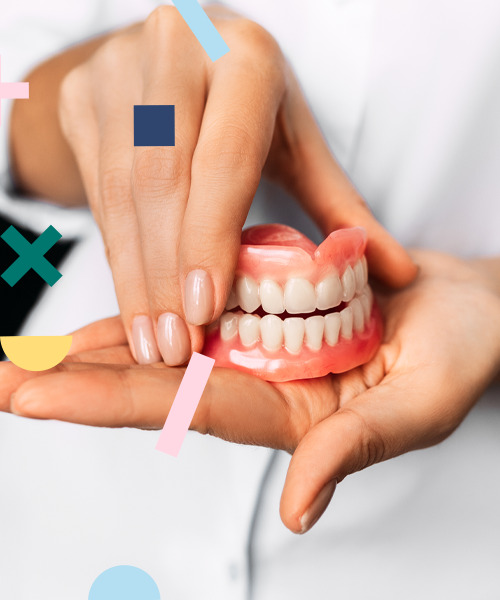
2. Types of dentures
Depending on the needs of each patient, there are two main types of dentures: fixed or removable. Within each of these groups, fixed prostheses and removable prostheses are also differentiated into several types.
While fixed dentures are permanently attached to the oral cavity, ensuring greater comfort for chewing and normal life, removable dentures are easier to clean as they can be easily removed. There are also hybrid prostheses that can be removed in some special cases, and the classic fully removable dentures.
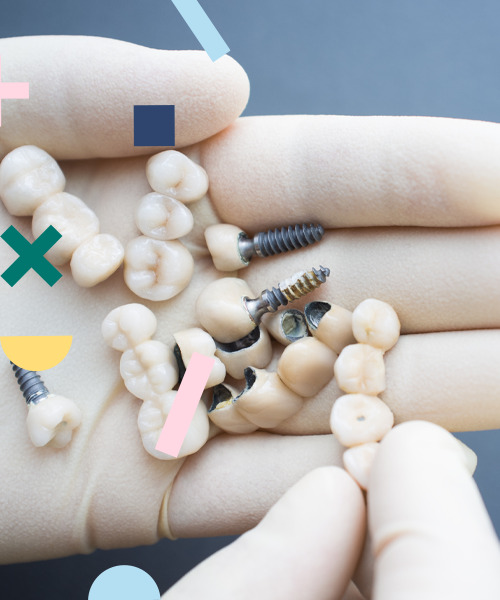
3. Prosthetic materials
The materials used in the manufacture of dental prostheses can vary according to the type of piece to be replaced and the use that the patient will give it. The most common are porcelain, resin and zirconium. Each has its own advantages and will be recommended for different situations.
Usually, removable prostheses are made with resin, using metal reinforcements for their fastening. Fixed prostheses require greater strength, and for this purpose ceramic is used as the main material. The strongest, and therefore most expensive, material is zirconium, which is increasingly used for fixed dentures because of its more natural aesthetic appearance.
Your KIN must-haves:
Find us at:
You can buy our products in your nearest pharmacy.
Find us in your trusted online store.
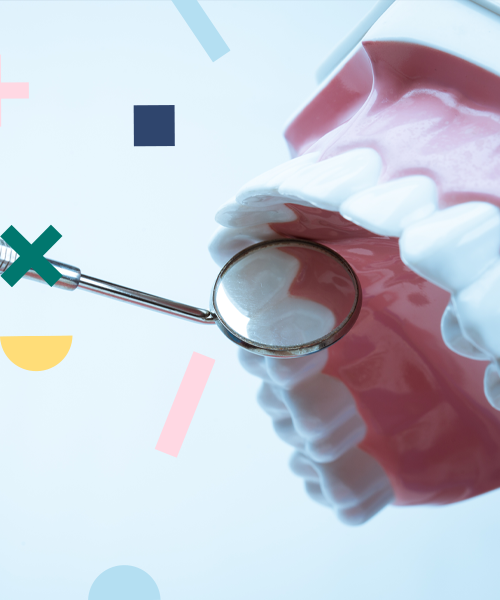
5. Cleaning the denture
The cleaning of dental prostheses, whether fixed or removable, is as important as the complete hygiene of the oral cavity. To do this, it is sufficient to brush well, ideally using a denture brush, and to accompany the cleaning with the use of products such as cleaning tablets or solutions specially formulated for prosthetic care and hygiene, in order to remove food debris and bacterial build-up.
In addition to brushing, it is necessary to complete the hygiene of the prosthesis with the use of dental floss or interdental brushes. It is also necessary to reinforce oral hygiene with the use of mouthwashes to rinse the mouth, and of course, to have a regular check-up at the dentist for a complete cleaning and to detect possible oral problems that can be treated in time.
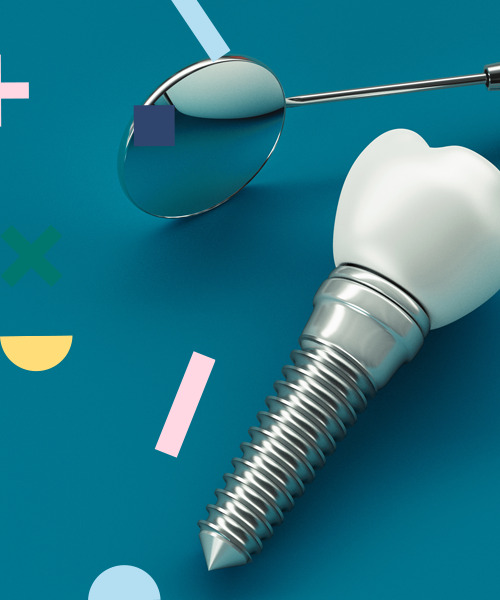
6. Dental Implants
Unlike prostheses, dental implants are pieces that are placed to replace a natural tooth when it has been lost. They are a quicker and simpler solution for restoring the functionality of lost teeth, and are most commonly used in young people and older adults.
Implants and dental prostheses are two terms that are sometimes confused, but in dental practice there are many differences between them. In order to find the most appropriate treatment, the dentist will recommend the best option for each patient.
Read more
7. What is a dental implant?
A dental implant is a medical device consisting of a screw, usually made of titanium, inserted into the alveolar bone in the upper and lower jaw. The new tooth, which replaces the root of the tooth, is placed on top of this piece, which will replace the lost tooth.
In short, the purpose of dental implant placement is to cover the aesthetic and functional function of a natural tooth that has had to be removed due to its destruction or deterioration as a result of disease or trauma.
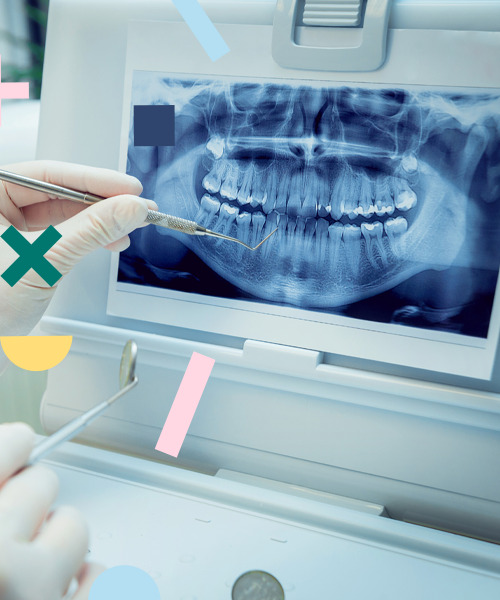
8. Dental Implantation Surgery
For the correct placement of the titanium screw, it is necessary to resort to surgery. This procedure uncovers the alveolar bone, removes the gum tissue and inserts the screw precisely.
In a second phase of the operation, when the gum wound has recovered, the crown is installed, which is the visible part with a similar appearance to the tooth. Once the process is complete, the base of the crown is well fixed to the bone and covered with the gum, and the tissue around it heals properly.
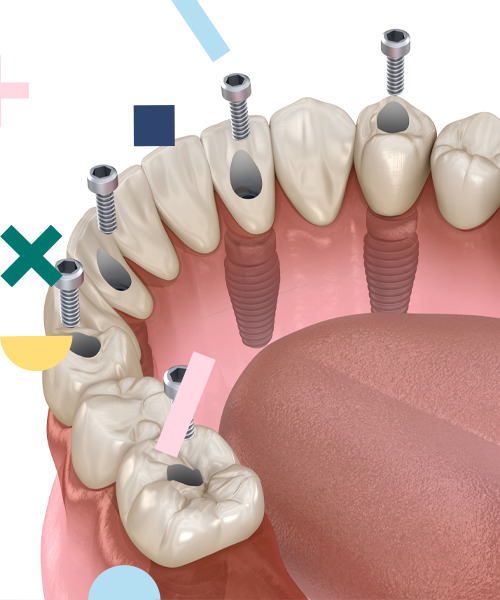
9. Types of Dental Implants
As each patient has different needs, and it is not always possible to follow the same type of procedure depending on the initial physical conditions, there are two types of dental implants. The difference between the two is the placement of the titanium screw, which can be placed deeper or shallower in the alveolar bone.
On the one hand, there are endosseous or osseointegrated implants, placed inside the bone for greater fixation. This type of implant is currently the most frequently used. However, although less commonly used, when a patient has minimal bone height due to wear of the alveolar bone and cannot opt for a removable prosthesis either, the alternative is subperiosteal or juxtaosseous implants, which consist of placing a metal frame in the bone just below the gum tissue.
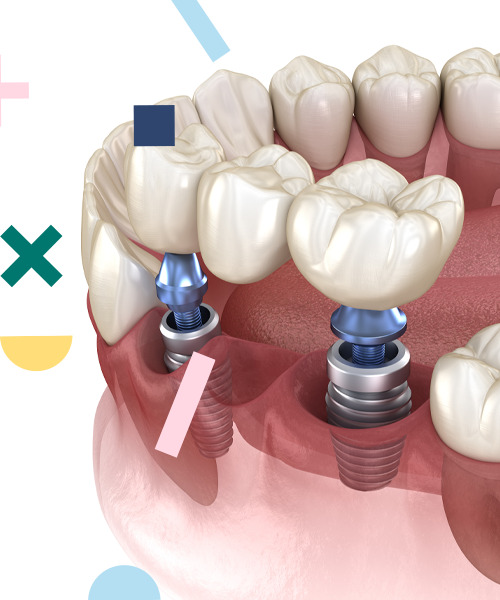
10. Dental Implant Materials
As with the manufacture of dental prostheses, different types of high-strength materials are used for implants. Since they are fixed parts that are integrated directly into the bone, the materials must be durable, with a consistency similar to that of the natural tooth root.
There are two widely used options for this: zirconium and titanium implants. While zirconium implants have a higher biointegration and excellent assimilation by the gum tissue, titanium implants are more economical and mouldable, also with a high biocompatibility.
Find your nearest KIN pharmacy
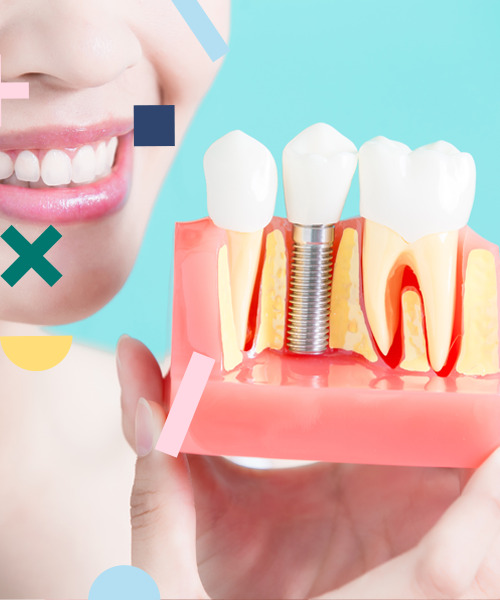
11. How long does a dental implant last?
Dental implants have an estimated durability of 15 to 25 years depending on the material chosen. However, there are several factors to consider when calculating how long the screw installed in the root of the dental crown will last intact.
To ensure greater longevity, proper daily dental hygiene is essential. Keeping the gums and other tissues surrounding the dental implant healthy extends the durability of the implant to fulfil its daily function.

12. Dental Implant Cleaning
Food debris and plaque build up on dental implants and natural teeth alike. They also become damaged over time, so it is very important to brush them daily after every meal to ensure thorough cleaning.
It is advisable to use a suitable toothbrush and toothpaste, as well as the recommended interdental hygiene accessories, including floss or interproximal brushes. In some cases, a small space may remain between the crown and the interproximal tissue, so special attention must be paid to remove dental biofilm using specific tools for cleaning prostheses and implants, such as a dental irrigator.

